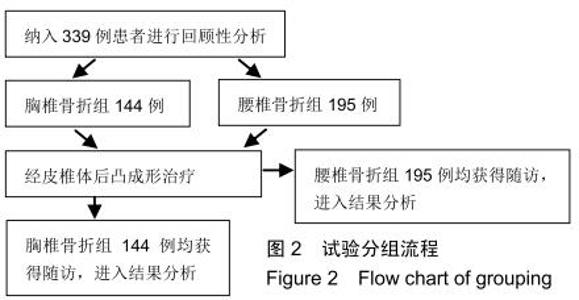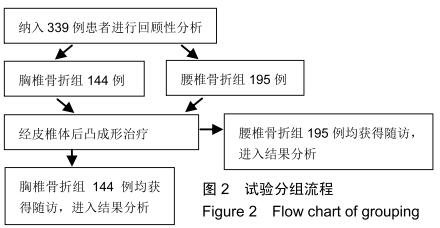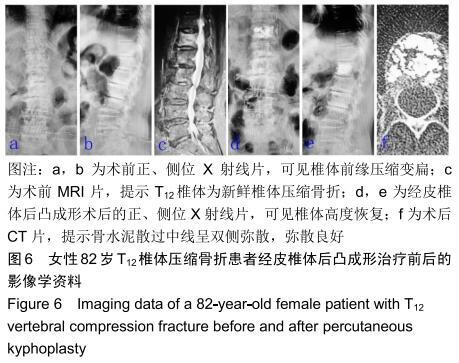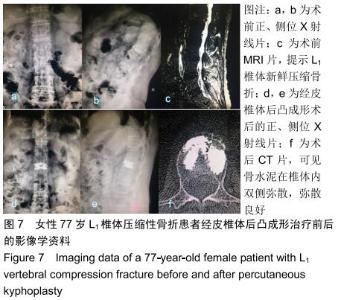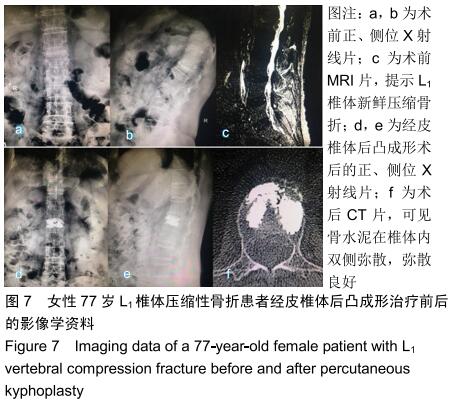|
[1] 邵珂,吉立新.不同程度椎体压缩骨折行经皮穿刺椎体成形术后骨水泥的弥散分布规律[J].创伤外科杂志,2019,21(7):508-512.
[2] YANG W, SONG J, LIANG M, et al. Functional Outcomes and New Vertebral Fractures in Percutaneous Vertebroplasty and Conservative Treatment of Acute Symptomatic Osteoporotic Vertebral Compression Fractures.World Neurosurg.2019;131: e346-e352.
[3] 文刚.椎体压缩骨折治疗现状[J].中华实用诊断与治疗杂志,2014, 28(10): 946-948.
[4] 李楠,张贵林,何达,等.骨水泥的分布与剂量对椎体成形术疗效影响的研究[J].中国骨与关节损伤杂志,2015,30(1):66-68.
[5] 王惠东,姚方超,傅智轶,等.大剂量骨水泥经皮椎体成形术治疗老年胸腰椎骨折的疗效及其影响因素[J].创伤外科杂志,2019,21(5): 340-345.
[6] 李业成,张巍,张成亮,等.经皮椎体成形术后骨水泥弥散类型不同与相邻椎体再骨折的关系[J].创伤外科杂志, 2019,21(8): 591-594.
[7] 张大鹏,毛克亚,强晓军,等.椎体增强术后骨水泥分布形态分型及其临床意义[J].中华创伤杂志,2018,34(2):130-137.
[8] 卢海川,吴益奇,黄春辉,等.经皮球囊扩张式椎体成形术治疗骨质疏松性椎体压缩骨折疗效研究[J].中国矫形外科杂志,2013,21(4): 403-405.
[9] ZHAO YS, LI Q, LI Q, et al. Effect of different bone cement dispersion types in the treatment of osteoporotic vertebral compression fracture. Zhongguo Gu Shang.2017;30(5):446-452.
[10] 金洁.骨质疏松性椎体压缩骨折致痛机制及PKP的镇痛原理探讨[D].武汉:湖北中医药大学,2014.
[11] 孙海波,齐明,海涌,等.小剂量骨水泥弥散度的效果评价[J].中国组织工程研究,2018,22(14):2140-2145.
[12] HE X, LI H, MENG Y, et al. Percutaneous Kyphoplasty Evaluated by Cement Volume and Distribution: An Analysis of Clinical Data. Pain Physician. 2016;19(7):495-506.
[13] 单周通,王恒,王子健.脊柱微创治疗OVCF临床效果的综述[J].世界最新医学信息文摘,2018,18(A2):100-101,103.
[14] 戴成鑫,武海军,刘聪,等.经皮椎体后凸成形术治疗骨质疏松性胸腰椎椎体压缩性骨折的临床效果以及临床体会[J].临床医学研究与实践,2019,4(23):4-5.
[15] XU C, LIU HX, XU HZ. Analysis of related factors on the deformity correction of balloon kyphoplasty.AJNR Am J Neuroradiol. 2014; 35(1): 202-206.
[16] LIN D, HAO J, LI L, et al. Effect of Bone Cement Volume Fraction on Adjacent Vertebral Fractures After Unilateral Percutaneous Kyphoplasty. Clin Spine Surg. 2017;30(3):E270-E275.
[17] 江晓兵,莫凌,梁德,等.骨水泥在椎体骨折线内弥散情况对椎体成形术治疗效果的影响[J].中国脊柱脊髓杂志,2014,11(2):144-149.
[18] CHEVALIER Y, PAHR D, CHARLEBOIS M, et al. Cement distribution, volume, and compliance in vertebroplasty: some answers from an anatomy-based nonlinear finite element study.Spine (Phila Pa 1976). 2008;33(16):1722-1730.
[19] 杨航,彭成忠,曾庆虎,等.单双侧穿刺椎体成形术对邻近椎体再骨折影响的比较[J].生物骨科材料与临床研究,2018,15(5):41-44.
[20] 万趸,熊小明,孙育良,邓等.单球囊双侧序贯扩张椎体后凸成形术预防复位椎体再塌陷[J].中国矫形外科杂志,2018,26(18):1658-1663.
[21] 李玉伟,王海蛟,崔巍,等.极外侧穿刺法行经皮椎体成形术治疗骨质疏松性椎体压缩骨折[J].中国修复重建外科杂志,2019,33(5): 612-617.
[22] LEE IJ, CHOI AL, YIE MY, et al. CT evaluation of local leakage of bone cement after percutaneous kyphoplasty and vertebroplasty. Acta Radiol. 2010;51(6):649-654.
[23] GSTÖTTNER M, ANGERER A, ROSIEK R, et al. Quantitative volumetry of cement leakage in viscosity-controlled vertebroplasty. J Spinal Disord Tech.2012;25(5):E150-154.
[24] LIN J, QIAN L, JIANG C, et al. Bone cement distribution is a potential predictor to the reconstructive effects of unilateral percutaneous kyphoplasty in OVCFs: a retrospective study.J Orthop Surg Res. 2018;13(1):140.
|


